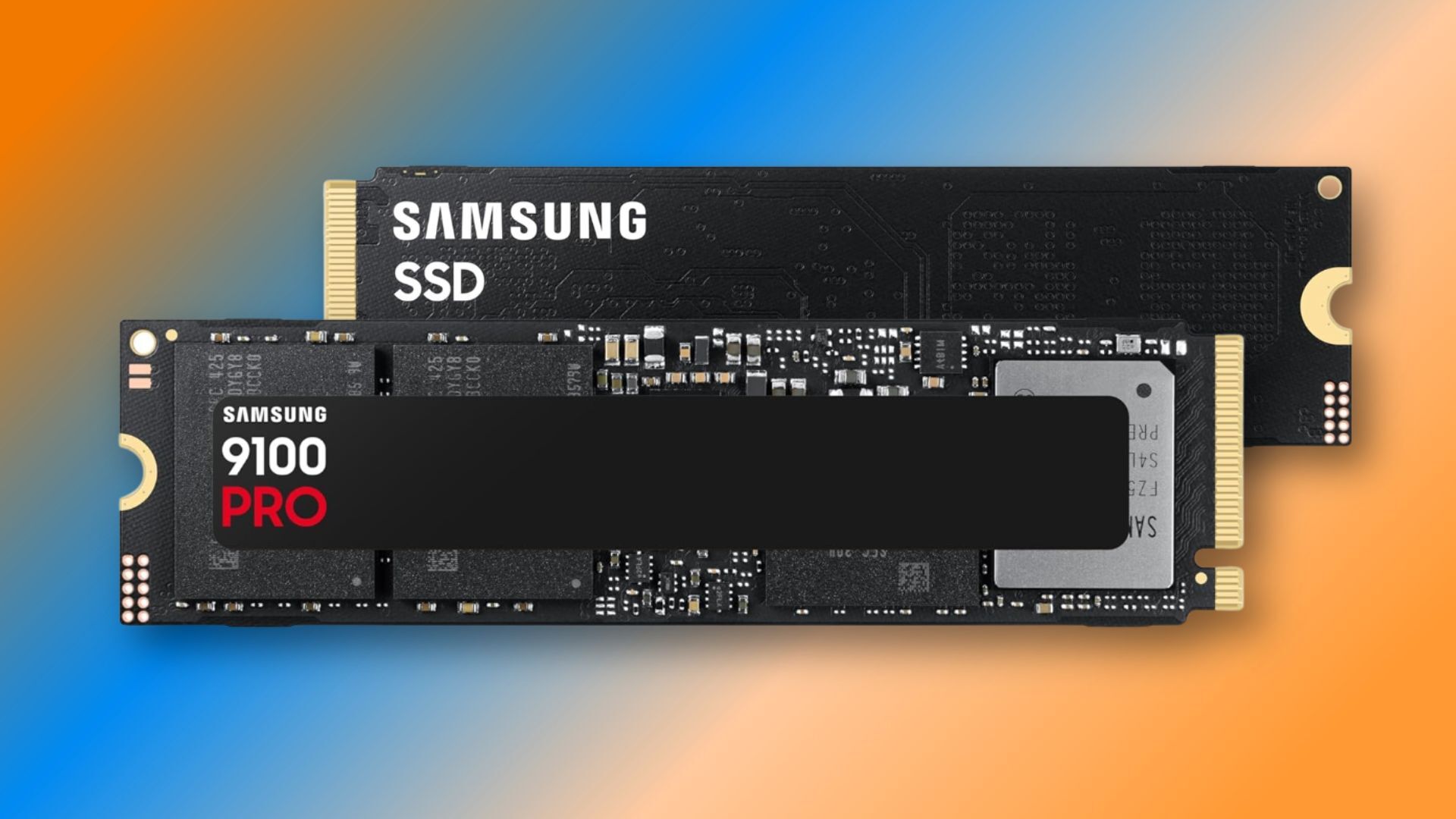Samsung's fastest consumer SSD raises its capacity cap — 8TB 9100 Pro to arrive in September
Bigger, faster, better.

Samsung has just announced the 8TB version of its 9100 Pro series of SSDs, which utilize PCIe 5.0 to achieve the highest speeds possible. The 9100 Pro series initially launched in 1TB, 2TB, and 4TB variants in February of this year, but the company is releasing the largest variant this coming September 2, according to German publication ComputerBase.de [machine translated].
The company claims that the drive can achieve sequential read speeds of 14,800 MB/s and write speeds of 13,400 MB/s, making it the fastest and largest drive Samsung has to offer. By comparison, the 8TB Samsung 990 Pro, which is only PCIe 4.0, only hits 7,540 MB/s sequential read speeds. Tom’s Hardware’s testing of the Samsung 9100 Pro shows that this series is great for all-around use with solid power efficiency. So, if you’re building a high-end PC and you want something that will perform in both gaming and productivity tasks, then this is the SSD for you.
You can also get the Samsung 9100 Pro with a heatsink, allowing it to perform at high speeds for much longer without suffering from thermal throttling. And even with the additional height, Samsung specially designed this SSD to fit in the PlayStation 5. So, both PC and console gamers will be able to store about 80 games on this drive, if each title averages around 90.6 GB.
Of course, having this large a capacity comes at a price. The 8TB Samsung 9100 Pro has an MSRP of EUR 964.99 (around USD 1,050 at the current exchange rate), while the variant with the included heatsink will cost EUR 983.99 (around USD 1,150). These are the expected prices if you purchase directly from Samsung, but other retailers will likely carry these drives at a lower cost.
Although there’s already a plethora of PCIe 5.0 SSDs on the market, only two companies offer 8TB variants at the moment — TeamGroup’s T-Force GE Pro M.2 and, now, Samsung. SanDisk plans to release an 8TB version of its WD Black SN8100, but it still hasn’t announced an official release date (although it plans to deliver it later this year).
Get Tom's Hardware's best news and in-depth reviews, straight to your inbox.

Jowi Morales is a tech enthusiast with years of experience working in the industry. He’s been writing with several tech publications since 2021, where he’s been interested in tech hardware and consumer electronics.
-
SonoraTechnical Not that I need it.. Nor do I want it... But I am curious to know when we will see 16TB in NVMe format? THis 8TB 9100 Pro appears to be 1 sided. Can NVMe carry chips on both sides? I don't know... I think cooling would be an issue.. I'm just asking.Reply
Looking at how it's populated on the 1 side... Appears maxed out for a while... -
Li Ken-un Reply
Already:SonoraTechnical said:But I am curious to know when we will see 16TB in NVMe format?
https://exascend.com/product/ssd/pe4-series/
16 TB M.2 2280 SSDs are here. -
Alvar "Miles" Udell I'm still waiting on affordable 8TB SATA SSDs for my NAS. Sadly with the push towards faster and faster NAND who knows if we'll ever see them.Reply -
Jame5 ReplyThe 8TB Samsung 9100 Pro has an MSRP of EUR 964.99 (around USD 1,050 at the current exchange rate), while the variant with the included heatsink will cost EUR 983.99 (around USD 1,150).
Really? 19 extra euros = 100 extra dollars? You might want to check the math there. -
Li Ken-un Reply
Writing’s been on the wall for a while: the future is PCIe.Alvar Miles Udell said:SATA SSDs
I planned to have an array of cheap SATA-class SSDs a few years ago. They had 16 TB SATA SSDs with intermittent availability. A the same time, 32 TB NVMe U.2 SSDs were also the largest capacity of their kind. The U.2 SSDs were double the volume and double the capacity of SATA SSDs, so their densities were essentially equivalent. What they sold for when the NAND market tanked:
16 TB SATA SSD: $1,800
32 TB NVMe U.2: $2,200The price never made sense, and it hasn’t gone that low since. I abandoned plans to have an SATA tier for warm storage.
Then the 64 TB NVMe U.2 SSDs came, but there were still 16 TB SATA SSDs.
Then the 128 TB NVMe U.2 SSDs came, but there were still 16 TB SATA SSDs.
Then 256 TB NVMe U.2 SSDs were announced, but there were still 16 TB SATA SSDs.
They’re not investing into SATA anymore. It’s a legacy interface. -
thesyndrome ReplySamsung's fastest consumer SSD raises its capacity cap
It raised its capacity capacity?
This is giving "ATM machine" vibes